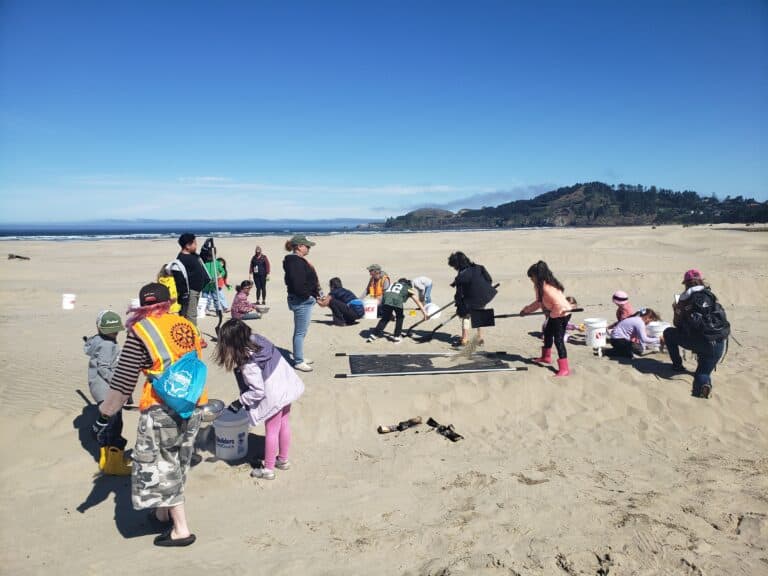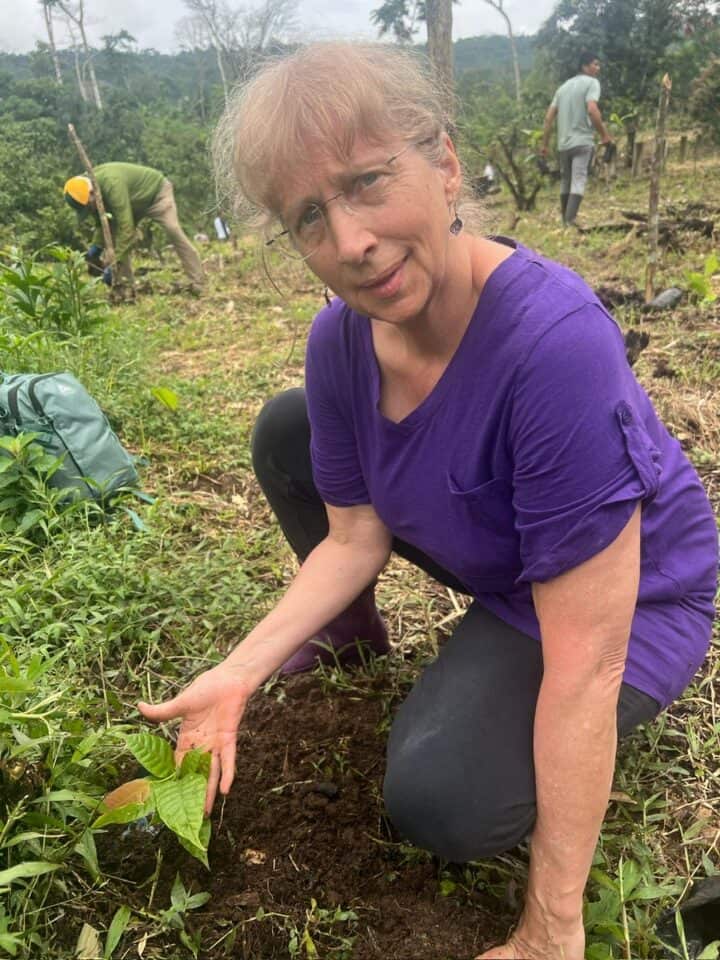In early July, some 55 students (3rd through 6th grade) from Taft Elementary School helped remove tiny microplastic pieces from the beach.
In the middle of July, 15 members of the Newport High School Cheer Team also volunteered for this noteworthy project.
Also, later this month, the Lincoln County Board of Realtors will be also be volunteering to clean dangerous microplastics from the sands of Agate Beach.
Before work each day, basic instructions are given to the team of volunteers.
For a number of years, Solve and Surfriders have been actively involved in removing trash from our local beaches. However, there is a growing concern over an oft hidden environmental danger – MICROPLASTICS.
Microplastics are small pieces of plastic that are less than 5 millimeters in size. They are often called “forever plastics” because they take hundreds or thousand years to finally decompose. Microplastics are harmful to the environment and have been found in many living things, including the organs of the human body.
The Rotary Club of Newport has adopted, as its primary club service project, the education of more Oregonians about the danger of microplastics both to the environment and the health of every living thing. The project involves encouraging Rotarians and volunteers to help clean up our local beaches.
The process is simple. Armed with shovels, volunteers place sand onto a fine mesh net which allows sand to pass through but separates the tiny plastic parts for collection.
Club Environmental chair, Guy Faust, developed the project in Newport after Rotary International added “Protecting the Environment” as a service for Rotary Clubs around the world.
We are cleaning the Newport area beaches EVERYDAY this summer. To volunteer and/or learn other ways you can help, please go to: www.rotaryclubofnewport.org
Together, we are raising awareness about the danger of microplastics by reaching out to District 5110 Rotary Clubs and other organizations in Oregon and Northern California and encouraging volunteers to help remove microplastics on the Oregon and Californian coasts and wherever they live.





Comments
2 comments
Jocelyn Bonner
Thank you for this important work and public service. My husband and I enjoyed helping in June and learning so much to spread the word to others. We have improved our habits concerning plastic.
Jocelyn Bonner
Eugene Southtowne
Diane Nelson
Our condominium owners’ association has signed up for Saturday, August 23rd.